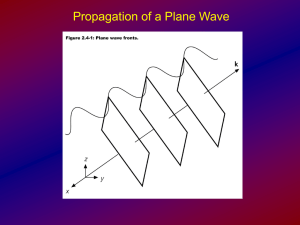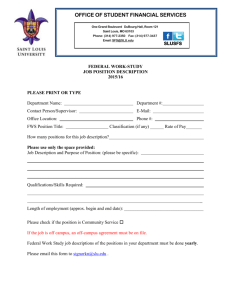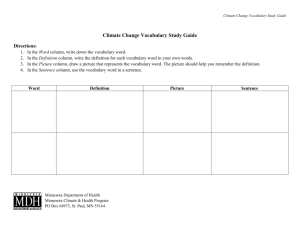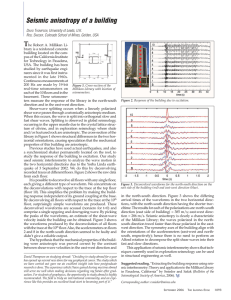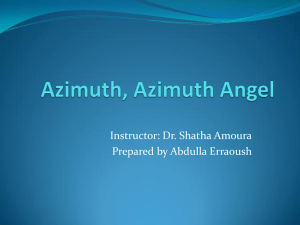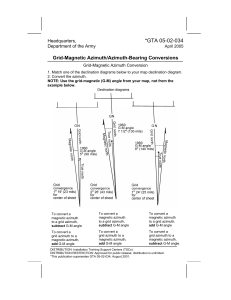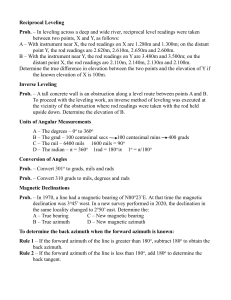Trace rotation - the Department of Earth and Atmospheric Sciences
advertisement
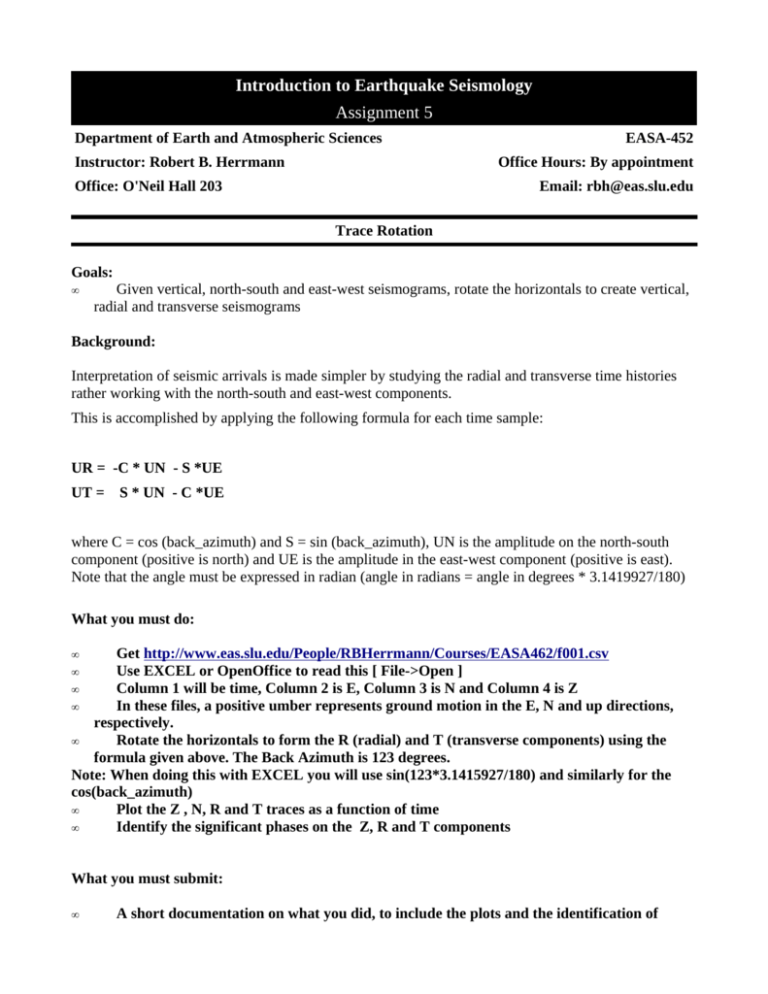
Introduction to Earthquake Seismology Assignment 5 Department of Earth and Atmospheric Sciences Instructor: Robert B. Herrmann EASA-452 Office Hours: By appointment Office: O'Neil Hall 203 Email: rbh@eas.slu.edu Trace Rotation Goals: • Given vertical, north-south and east-west seismograms, rotate the horizontals to create vertical, radial and transverse seismograms Background: Interpretation of seismic arrivals is made simpler by studying the radial and transverse time histories rather working with the north-south and east-west components. This is accomplished by applying the following formula for each time sample: UR = -C * UN - S *UE UT = S * UN - C *UE where C = cos (back_azimuth) and S = sin (back_azimuth), UN is the amplitude on the north-south component (positive is north) and UE is the amplitude in the east-west component (positive is east). Note that the angle must be expressed in radian (angle in radians = angle in degrees * 3.1419927/180) What you must do: Get http://www.eas.slu.edu/People/RBHerrmann/Courses/EASA462/f001.csv Use EXCEL or OpenOffice to read this [ File->Open ] • Column 1 will be time, Column 2 is E, Column 3 is N and Column 4 is Z • In these files, a positive umber represents ground motion in the E, N and up directions, respectively. • Rotate the horizontals to form the R (radial) and T (transverse components) using the formula given above. The Back Azimuth is 123 degrees. Note: When doing this with EXCEL you will use sin(123*3.1415927/180) and similarly for the cos(back_azimuth) • Plot the Z , N, R and T traces as a function of time • Identify the significant phases on the Z, R and T components • • What you must submit: • A short documentation on what you did, to include the plots and the identification of phases.

